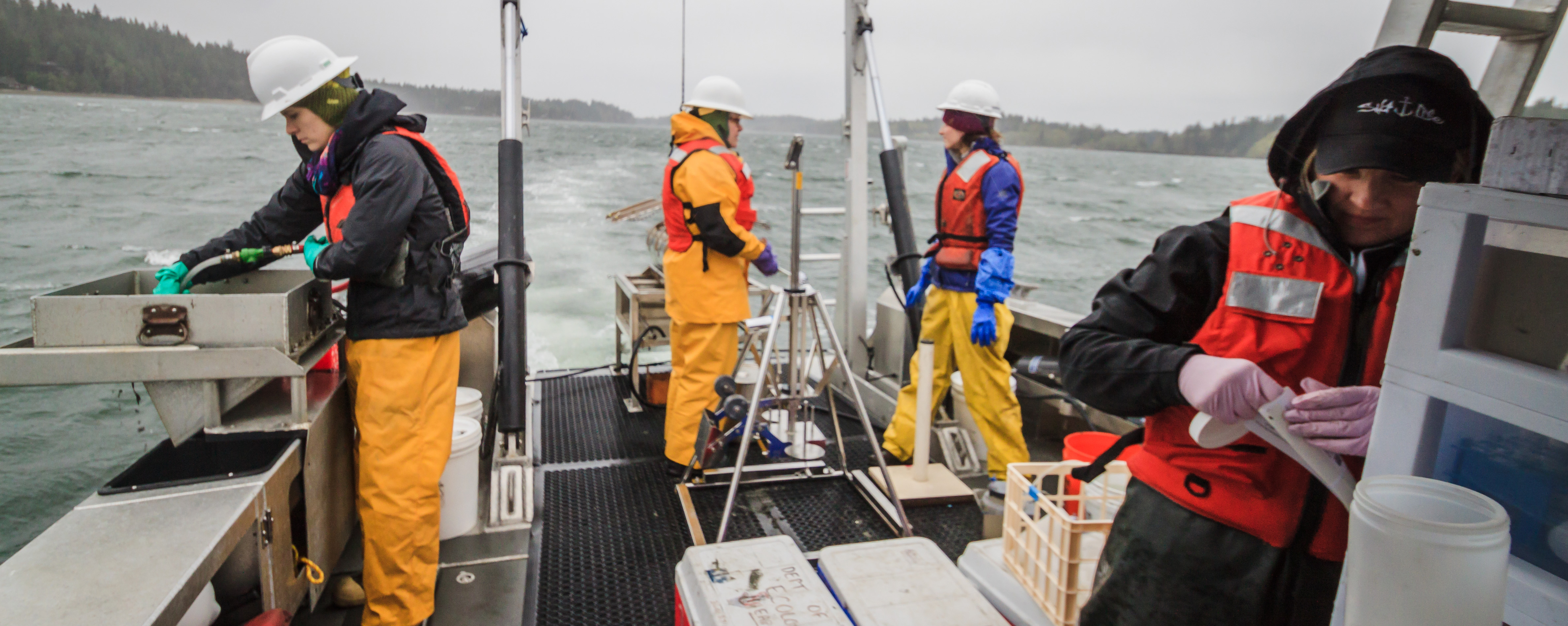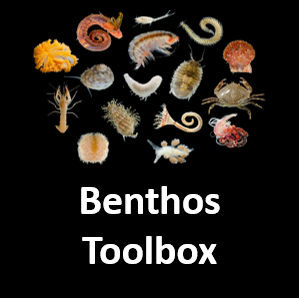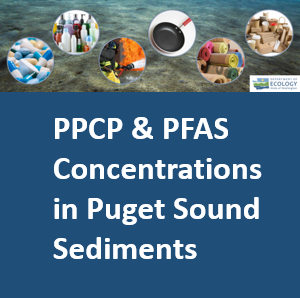Puget Sound sediments
Our team of scientists collects data on sediments and invertebrate communities found at the bottom of Puget Sound, to document condition and change over time.
Why do we monitor the bottom of Puget Sound?
Puget Sound sediments are an accumulation of organic and inorganic material on the seafloor, including soil particles and decayed plant and animal matter. Sediments provide critical habitat for bottom-dwelling invertebrates, called benthos.
Benthos play a key role in sediment processes and are a vital link in nutrient- and pollution-cycling and the marine food web. In addition, many Puget Sound benthic invertebrates are harvested commercially and are important both economically and culturally.
Addressing key questions
Our Marine Sediment Monitoring Team has studied Puget Sound sediments since 1989, with the goal of addressing the following questions:
- What is the condition of the benthic habitat and associated invertebrate organisms?
- How do the habitats and communities change over time?
- What are the relationships between benthic invertebrates and environmental parameters measured, such as nutrients, chemical pollutants, and climate-related pressures?
Our monitoring products
Visit our story maps to learn about our monitoring projects, sampling locations, results, and taxonomic tools.
Related links
Contact information
Julianne Ruffner
Marine Monitoring Unit Supervisor
julianne.ruffner@ecy.wa.gov
360-280-4518





